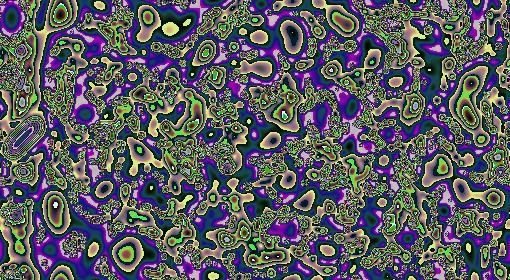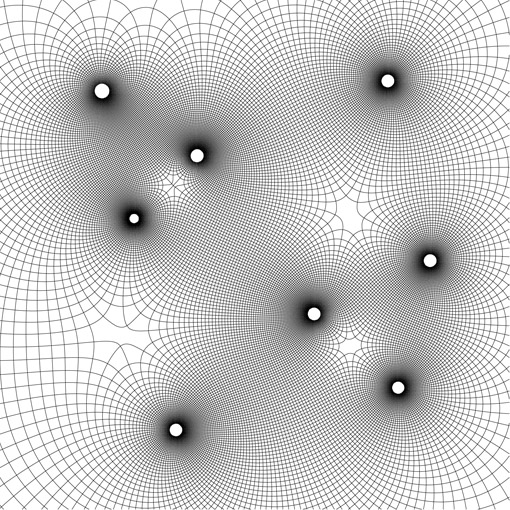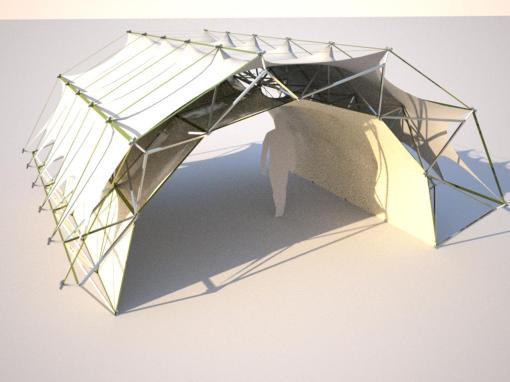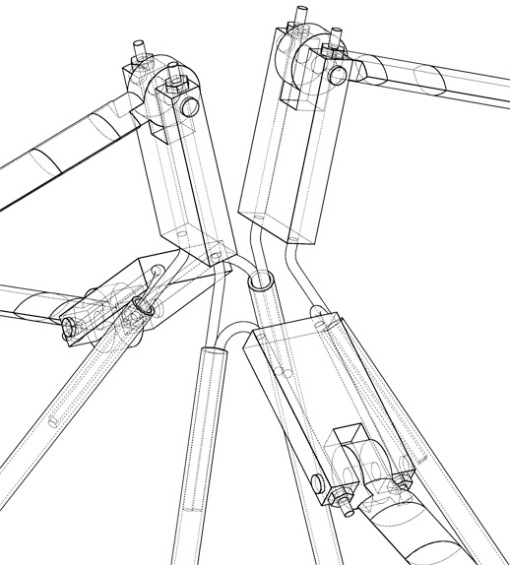February 2009
Monthly Archive
February 26, 2009
Posted by Daniel under
All,
Cellular Automata,
Grasshopper,
processing,
Rhinoscript | Tags:
Cellular Automata,
Conway,
Game of Life,
Grasshopper,
processing.org,
Rhino,
Rhinoscript |
[2] Comments
In the best known example of Cellular Automata – Conway’s Game of Life, each cell has a binary state – it is either On or Off.
However, it is possible to explore similar automata where the state of each cell can be any real number in a given range – Continuous Cellular Automata.
The video above shows such a CCA in grasshopper. Each cell has a height value, which interacts with the values of its neighbours according to a simple* equation. This is a way of generating 3-Dimensional forms even though the cells only use a 2-dimensional Moore neighbourhood.
You can download the grasshopper definition here:
CAheights2.ghx
I made this by taking a Game of Life definition which Baldino had already made and simply copy-pasting some code from one of my earlier processing sketches into the VB component (well, I had to change a couple of bits of syntax, but surprisingly little).
The processing sketch uses colours instead of heights to show the value of each cell, and is mouse reactive:

Click image for Live Interactive version + sourcecode
Its strange the way it varies between periods of calm and chaos, without ever completely settling down or degenerating to noise.
* though it took me a fair bit of trial and error to come up with this particular equation. Just like the different rulesets explored by Wolfram, little changes can give quite different results, and I ran through all sorts of odd glitchiness before finding one I liked.
February 24, 2009
Here is a displacement by attractors definition for grasshopper based on some real physics:
It allows you to set multiple ‘attractors’ which interact realistically just like electric charges, magnets, heat flows or ideal fluids. Sliders control whether each point is a source, sink, vortex or a combination of these.
Get the ghx here
edit 26/10/09 : Check out the new and improved 3D version – JellyFish
I’ve long been fascinated by this area of math/physics. For more on this, take a look at rheotomic surfaces (its a bit of a long read, but skip down to see all the pictures and videos)

February 24, 2009
Another simple ‘thick origami’ type mechanism I invented.
I am really loving how easy Grasshopper makes it to explore this stuff!
February 23, 2009
Continuing the theme of my previous post, this shows how several of these linkages can be joined to form larger deployable structures.
It works by defining an octahedron, based on 4 user positioned points and certain geometric conditions, which allow it to join to copies of itself along 4 of its edges.
The slider then controls the single degree of freedom of the resulting over-constrained structural mechanism.
At the moment all units are identical and the structure deploys to a flat plane, but I’m looking at ways of letting it curve and take on more interesting shapes. This is fairly simple to do for curvature in a single direction, to form vaults etc. But finding the necessary geometric conditions for doubly curved structures (such as domes) from networks of Bennett linkages is currently an open problem.
GH feels like it might be the right tool to solve it though.
Again this is based on the work of Y.Chen and Z.You which I linked to earlier. There’s also a shorter paper here, and a nice overview of motion structures here.
Will post the ghx as soon as I’ve cleaned it up a little.
Last year I was designing some shelters based on this stuff. I was looking at ways of bracing it with tape springs or bi-stable struts (a fascinating subject in its own right, which deserves its own post). The joint still needs work – the version shown below adds unwanted degrees of freedom.


Next Page »



